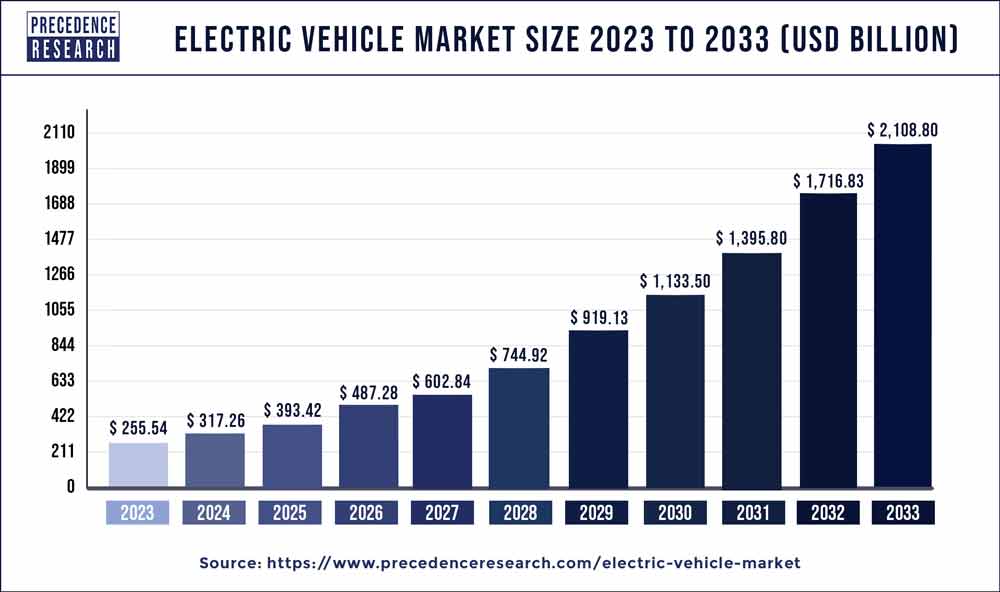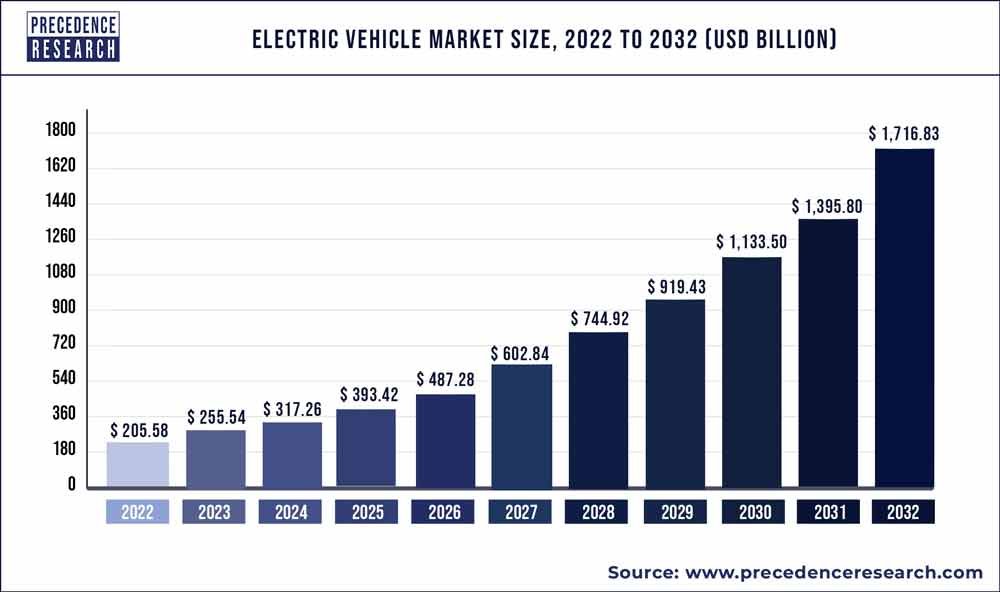In the rapidly evolving world of transportation, the global electric vehicle market has been gaining momentum at an astonishing rate. With environmental concerns at the forefront, more and more individuals are opting for these sustainable modes of transportation. From innovative technology advancements to government incentives, various factors have contributed to the exponential growth of electric vehicles worldwide. In this article, we will explore the remarkable progress of the electric vehicle market on a global scale and delve into the driving forces behind its expansion.
Government Support and Initiatives
Financial incentives to promote electric vehicles
Governments around the world are taking steps to promote the use of electric vehicles (EVs) through various financial incentives. These incentives can include subsidies, grants, tax credits, and rebates for purchasing an EV. By providing financial support, governments aim to make EVs more affordable for consumers, encouraging them to choose this sustainable mode of transportation.
Charging infrastructure expansion
To support the growth of the electric vehicle market, governments and private entities are investing in expanding the charging infrastructure network. The installation of more charging stations in public spaces, residential areas, and commercial establishments enables EV owners to conveniently charge their vehicles wherever they go. This expansion helps alleviate “range anxiety,” which is the fear of running out of battery power while driving, thus boosting consumer confidence in EVs.
Development of stringent emission regulations
In an effort to reduce greenhouse gas emissions and combat climate change, governments are creating and implementing stricter emission regulations for vehicles. These regulations incentivize automakers to shift towards producing electric vehicles, as they have zero tailpipe emissions. By imposing stringent emission standards, governments are actively contributing to the growth of the electric vehicle market.
Increasing Investment and Production Capacity
Rise in electric vehicle manufacturing facilities
Automakers worldwide are ramping up investment in the development and construction of electric vehicle manufacturing facilities. These dedicated facilities are specifically designed for the production of electric vehicles and their components. This increase in manufacturing capacity allows automakers to meet the growing demand for EVs and expand their market reach.
Expansion of electric vehicle product lineup
As the electric vehicle market grows, automakers are expanding their product lineup to include a wider range of electric vehicle models. This expansion ensures that there are electric vehicle options available to meet various consumer preferences and needs, whether it be compact electric cars, SUVs, or luxury electric vehicles. By diversifying their product range, automakers cater to a broader customer base and increase the accessibility of electric vehicles.
Collaborations between automakers and technology companies
To keep up with the pace of technological advancements, automakers are increasingly partnering with technology companies to develop and enhance electric vehicle technologies. These collaborations enable the integration of innovative features such as advanced infotainment systems, connectivity options, and autonomous driving capabilities in electric vehicles. By combining their expertise, automakers and technology companies drive the growth and advancement of the electric vehicle market.

Advancements in Battery Technology
Improvements in energy density
Battery technology plays a crucial role in the performance and range of electric vehicles. Recent advancements in battery technology have led to significant improvements in energy density, allowing batteries to store more energy in a smaller and lighter package. This increased energy density translates into longer driving ranges for electric vehicles, making them more practical for everyday use.
Extended driving range
One of the key considerations for consumers when choosing an electric vehicle is its driving range on a single charge. Advancements in battery technology, coupled with efficient power management systems, have resulted in electric vehicles with significantly extended driving ranges. This extended range mitigates range anxiety concerns and promotes the widespread adoption of electric vehicles as a viable alternative to conventional combustion engine vehicles.
Reduced charging time
Another challenge for electric vehicle adoption is the time required to recharge the vehicle’s battery. However, advancements in battery technology have led to the development of fast-charging capabilities, significantly reducing charging times. Fast-charging stations are becoming more prevalent, enabling electric vehicle owners to charge their vehicles quickly and conveniently, similar to refueling a conventional vehicle with gasoline.
Declining Battery Costs
Economies of scale
As the electric vehicle market expands, the production volume of batteries increases, leading to economies of scale. Increased production volume allows battery manufacturers to achieve cost efficiencies, resulting in reduced battery costs. This reduction in battery costs positively impacts the overall affordability of electric vehicles, making them more accessible to a wider range of consumers.
Technological advancements in battery manufacturing
Technological advancements in battery manufacturing processes contribute to the declining costs of electric vehicle batteries. Improved manufacturing techniques, such as advanced cell chemistry and automation, streamline production and reduce production costs. These advancements allow for the mass production of high-quality batteries at lower costs, driving the affordability of electric vehicles.
Increased competition among battery manufacturers
With the growing demand for electric vehicle batteries, a competitive market has emerged among battery manufacturers. Increased competition leads to innovation and cost reduction as companies strive to gain a larger market share. This increased competition fosters technological advancements and efficiency improvements, ultimately resulting in declining battery costs for electric vehicle manufacturers and consumers.

Growing Consumer Demand
Awareness about environmental advantages
Consumers are becoming more environmentally conscious and are increasingly aware of the environmental advantages of electric vehicles. As concerns about climate change and the depletion of fossil fuels grow, many consumers are motivated to switch to electric vehicles to reduce their carbon footprint. This heightened awareness and environmental consciousness drive consumer demand for electric vehicles globally.
Desire for lower operating costs
Electric vehicles offer potential cost savings in terms of lower operating costs compared to conventional internal combustion engine vehicles. Electric vehicles have fewer moving parts, require less maintenance, and electricity costs for charging are often lower than the cost of gasoline or diesel fuel. Consumers are attracted to the long-term savings potential associated with electric vehicles, making them an appealing choice for cost-conscious individuals.
Increased availability of electric vehicle models
As the electric vehicle market grows, an increasing number of automakers are introducing electric vehicle models to their lineup. This expanding availability of electric vehicles provides consumers with more choices and options to meet their specific needs. The greater availability of electric vehicles, coupled with advancements in battery technology, charging infrastructure, and government support, further fuels the growing consumer demand for electric vehicles.
Expansion of Charging Infrastructure
Deployment of fast-charging stations
The expansion of the electric vehicle market has led to a parallel expansion of the charging infrastructure. Governments, private companies, and utility providers are investing in the deployment of fast-charging stations, which allow electric vehicle owners to charge their vehicles quickly and conveniently. The availability of fast-charging stations along highways, at shopping centers, and in parking lots encourages electric vehicle adoption by reducing travel anxiety and providing more charging options.
Integration of charging points in public spaces
Charging infrastructure is not limited to specific charging stations; it also includes the integration of charging points in public spaces. More and more cities and urban areas are installing charging points in public parking garages, on-street parking spaces, and other commonly used areas. This integration ensures that electric vehicle owners have easy access to charging facilities, making electric vehicle ownership more convenient and feasible for consumers.
Development of wireless charging technology
Innovation in charging technology has resulted in the development of wireless charging systems for electric vehicles. With wireless charging, electric vehicles can be charged without the need for physical connections or cables. This technology simplifies the charging process and enhances user convenience. As wireless charging infrastructure becomes more widespread, it will further facilitate the adoption of electric vehicles by making charging even more effortless and seamless.

Rise of Electric Vehicle Sharing and Renting Services
Emergence of electric car-sharing platforms
Electric car-sharing platforms offer individuals the convenience of using an electric vehicle for short-term needs without the commitment of ownership. These platforms provide access to electric vehicles on a pay-per-use basis, allowing users to rent electric vehicles for a few hours or days. Electric car-sharing services are gaining popularity in urban areas where owning a vehicle might be impractical. The rise of these services contributes to the overall growth and accessibility of electric vehicles.
Expansion of electric vehicle rental services
In addition to car-sharing platforms, traditional vehicle rental companies are expanding their fleets to include electric vehicles. Electric vehicle rental services provide consumers with the option to rent an electric vehicle for a longer period, such as for vacations or business trips. This expansion of rental services allows individuals to experience electric vehicles firsthand and may influence their decision to purchase an electric vehicle in the future.
Integration of electric vehicles into ride-hailing services
Electric vehicles are being integrated into ride-hailing services, such as Uber and Lyft, as part of efforts to reduce emissions from transportation. Ride-hailing companies are encouraging their drivers to switch to electric vehicles by offering incentives and preferential treatment, such as access to dedicated charging stations. The integration of electric vehicles into ride-hailing services not only reduces emissions but also exposes a larger audience to electric vehicles, promoting their adoption.
Environmentally Conscious Policies
Implementation of strict emissions standards
To tackle pollution and mitigate climate change, governments worldwide are implementing stricter emissions standards for vehicles. These standards require automakers to reduce the emissions produced by their vehicles, pushing them towards producing electric vehicles with zero tailpipe emissions. Stringent emissions standards promote the growth of the electric vehicle market by making electric vehicles a more attractive option for automakers to comply with regulations.
Promotion of electric vehicles through tax incentives
Many governments provide various tax incentives to promote the adoption of electric vehicles. These incentives can include tax credits, exemptions, or reduced registration fees for electric vehicles. By offering financial advantages, governments encourage consumers to choose electric vehicles over conventional vehicles, thereby supporting the growth of the electric vehicle market.
Introduction of zero-emission zones in cities
To improve air quality and reduce pollution, some cities have introduced zero-emission zones, where only electric vehicles are allowed to operate. These zones aim to create cleaner and healthier urban environments by eliminating tailpipe emissions from vehicles within designated areas. By implementing zero-emission zones, cities encourage the adoption of electric vehicles and accelerate the shift towards sustainable transportation.

Increasing Global Adoption of Electric Vehicles
Growing sales in major markets like China, Europe, and the US
The global adoption of electric vehicles is evident in the growing sales figures, particularly in major markets like China, Europe, and the United States. These markets have seen a significant increase in electric vehicle sales due to various factors, such as government support, infrastructure development, and consumer demand. The growing sales in these major markets pave the way for further expansion and investment in the electric vehicle market.
Government commitments to phase out internal combustion engines
To combat climate change and reduce greenhouse gas emissions, several governments have made commitments to phase out internal combustion engines (ICE) in favor of electric vehicles. These ambitious goals and targets set by governments provide a clear pathway for electric vehicles to dominate the automotive market. Government commitments propel the global adoption of electric vehicles by fostering a regulatory environment that supports the transition away from traditional combustion engine vehicles.
Improving charging infrastructure in developing countries
While the electric vehicle market initially flourished in developed countries, there is now a growing focus on expanding the market in developing countries. To facilitate this expansion, governments and organizations are investing in improving the charging infrastructure in these countries. By building a robust charging network, developing countries can overcome one of the barriers to electric vehicle adoption and actively participate in the global transition to sustainable transportation.
Technological Advancements and Innovation
Autonomous driving capabilities in electric vehicles
Technological advancements are driving innovation in the electric vehicle market, with one notable development being the integration of autonomous driving capabilities. Electric vehicles are well-suited for autonomous driving due to their electric drivetrains and advanced vehicle-to-vehicle communication systems. The integration of autonomous driving technology enhances the convenience and safety of electric vehicles, making them even more appealing to consumers.
Integration of renewable energy sources into vehicle charging
To further enhance the sustainability of electric vehicles, there is a growing emphasis on the integration of renewable energy sources into the vehicle charging process. Charging stations powered by solar panels or wind turbines contribute to reducing the carbon footprint associated with electric vehicle charging. This integration aligns electric vehicles with the goal of achieving a renewable energy-powered transportation system, ensuring a more sustainable future.
Development of solid-state batteries for enhanced performance
Solid-state battery technology holds significant potential for revolutionizing the electric vehicle market. Solid-state batteries offer higher energy densities, faster charging capabilities, and improved safety compared to traditional lithium-ion batteries. Researchers and industry players are actively working on developing and commercializing solid-state battery technology, aiming to overcome current limitations and offer enhanced performance for electric vehicles. The development of solid-state batteries opens up new possibilities for the future of electric vehicles, paving the way for even greater adoption and advancement in the market.
In conclusion, the electric vehicle market is experiencing significant global growth due to various factors such as government support, technological advancements, declining battery costs, expanding charging infrastructure, and increasing consumer demand. With continued efforts to promote electric vehicles, develop innovative technologies, and improve sustainability, the future looks bright for the electric vehicle market, paving the way for a more sustainable and environmentally friendly transportation sector.


